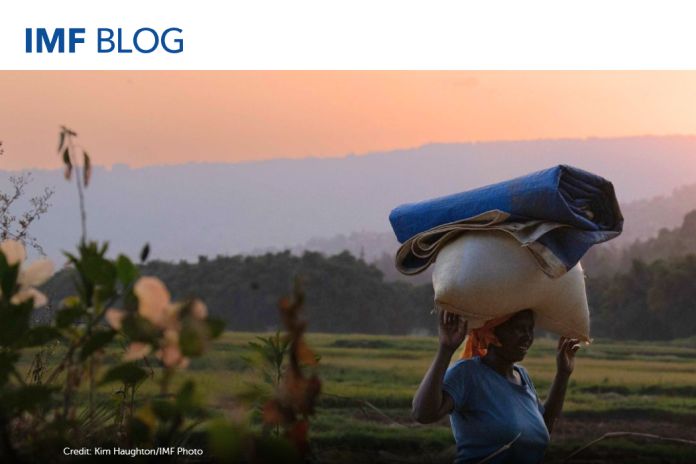– With elevated debt service squeezing the space available to finance much-needed investment in many countries, urgent action is needed to boost fiscal space, maintain adequate international support, and reduce debt servicing costs.
By Ceyla Pazarbasioglu and Pablo Saavedra
Many countries are being squeezed by increasing interest payments and high debt redemptions. The economic scarring of the pandemic, conflicts around the world, and the abrupt rise in global interest rates have hit low-income countries the hardest. The median low-income country is spending over twice as much on debt service to foreign creditors as a share of revenue than it did ten years ago roughly 14 percent at the end of 2023 from 6 percent 10 years earlier. Following years of substantial borrowing, debt redemptions in low-income countries over the near term are almost triple their long-term average: about $60 billion compared to an annual average of $20 billion from 2010 to 2020.
Improved creditor processes, thanks to the work of creditor committees and the Global Sovereign Debt Roundtable, the Group of Twenty, the Paris Club, and others, helped streamline sovereign debt restructuring and shorten restructuring timelines. However, more work is needed to make these processes faster and further reduce uncertainty.
While we avoided a systemic debt crisis so far, higher interest payments and debt redemptions are stifling growth and employment while also placing significant pressures on many countries’ public finances. This comes at a time when countries need critical investment to achieve sustainable and inclusive economic growth and adapt to climate change. Left unaddressed, these liquidity pressures could lead to solvency problems for many vulnerable countries. In other words, what is now a squeeze on public finances could morph into a debt crisis, with substantive implications for growth, job creation, and poverty.
The global community must act now to avoid this outcome.
The IMF and World Bank together propose a package of actions to support low-income countries and other vulnerable countries as they work to manage these pressures with the aim of creating more room in government budgets to support growth and build resilience.
Our approach rests on three pillars:
- Pillar 1 – Domestic resource mobilization. Governments can boost growth and jobs and generate fiscal space via domestic resource mobilization. Our joint new IMF/World Bank Domestic Resource Mobilization Initiative will provide policy advice and capacity development assistance to help countries implement needed reforms. This means sequencing reforms to accelerate economic growth and create jobs, while strengthening governance and tackling corruption, guided by peer learning and cross-country experiences. It also calls for improving the effectiveness of public spending, increasing government revenues to meet priority needs, and developing domestic financial markets to channel savings to productive uses.
- Pillar 2 – International support. Financial support can help countries meet their needs as they undertake important reforms. Support from bilateral and multilateral development partners will be needed, including by providing lower-cost financing and grants. Many countries facing refinancing pressures need positive net flows over the next few years. The IMF and World Bank are important parts of this collective effort. 2024 is a critical year to successfully complete the 21st replenishment of the World Bank’s International Development Association and the IMF’s Poverty Reduction and Growth Trust review.
- Pillar 3 – Reducing debt servicing burdens. New solutions are needed to support countries that do not have solvency problems but need to manage the high debt servicing levels. These include mechanisms by multilateral or bilateral partners to mobilize new financing, including from the private sector, at affordable terms using credit enhancements to refinance existing debt. Countries could also pursue liability management operations, including debt-for-development swaps and debt buybacks where appropriate.
We will refine these options before the IMF-World Bank Annual Meetings in October, including through work of the Global Sovereign Debt Roundtable.
Ultimately, our three-pillar approach aims to ease liquidity challenges. By mobilizing a set of actions across multiple stakeholders, we can promote cooperative solutions and help create the conditions for lasting growth and resilience.
![]()





